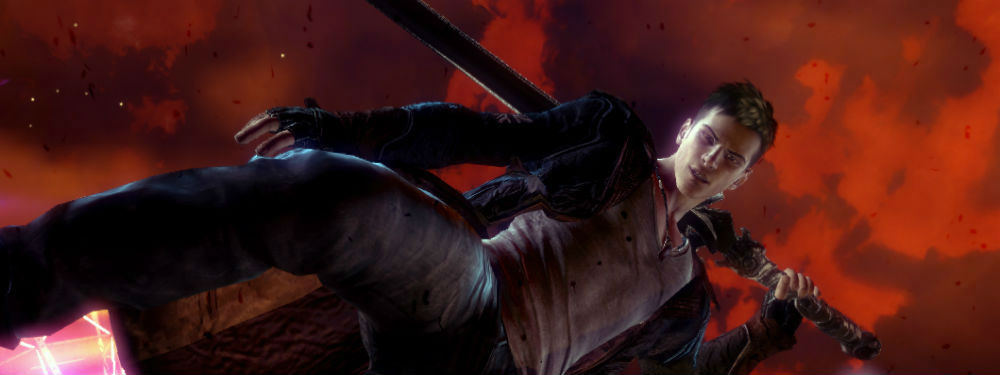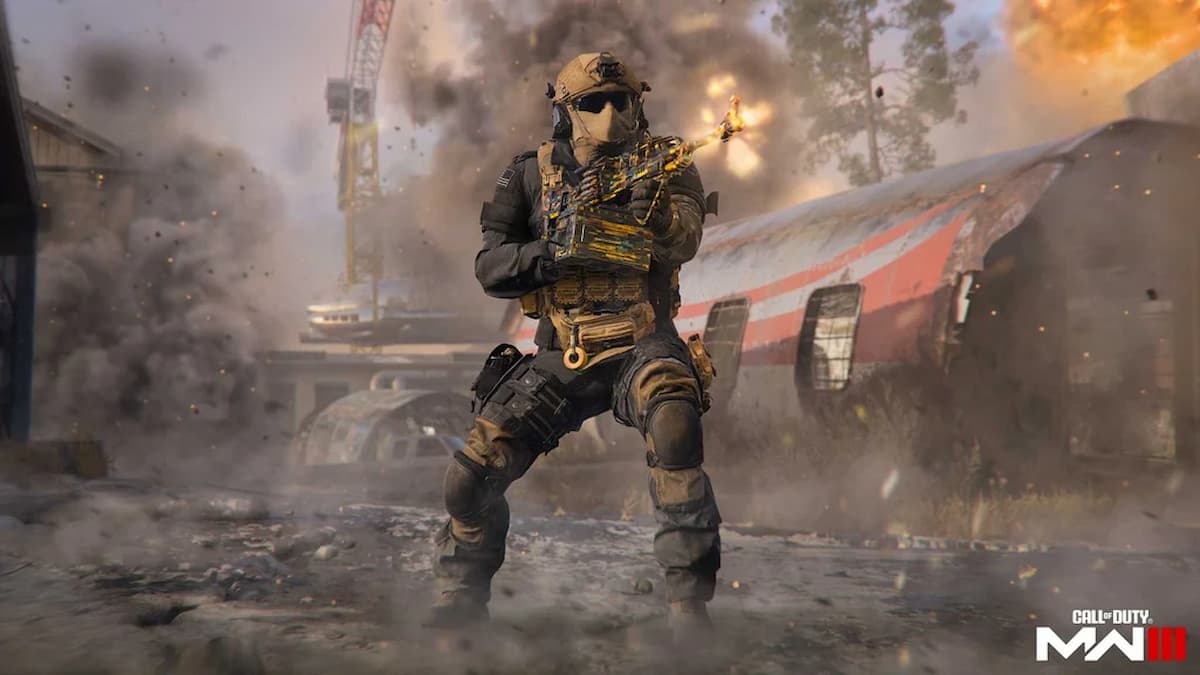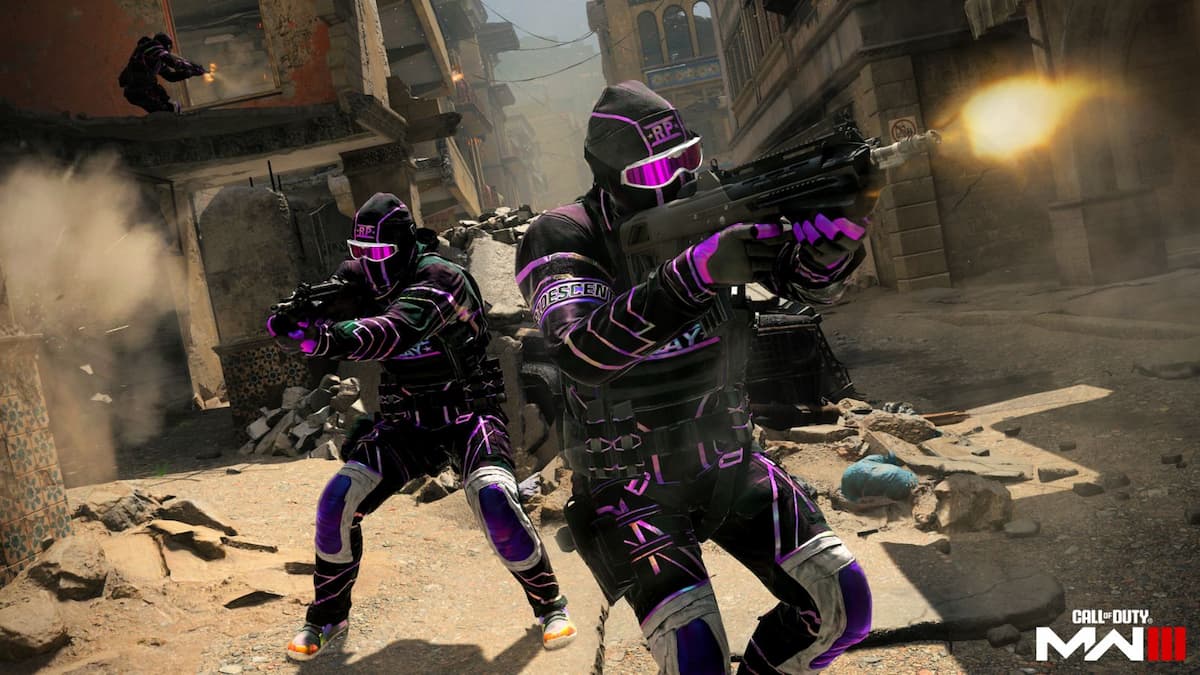Something good, something bad
It’s been about a week since Ninja Theory and Capcom made the DmC: Devil May Cry demo available for public consumption, and I’ve had quite a bit of time to reflect on it, as well as replay the classic games that made Devil May Cry a household name for a direct comparison.
A lot of people asked me what I think of the game, since I’m one of the most vocal DmC fans on Destructoid. I own every game (even redundant platforms), I bought every game at launch, and I’ve beaten all of them on every difficulty. It’s safe to say I love DmC.
Going in, I was extremely skeptical of Ninja Theory. No, not because Dante’s hair is a different shade of grey — because Ninja Theory, in my opinion, has never developed a solid action game in the history of their company.
With that in mind, here’s what I think of the demo.
In case you’re interested:
The demo is available right now on the Xbox 360 and PS3.
It involves two missions: Under Watch (a standard level that teaches you how to play), and Secret Ingredient (a short boss battle).

The Good:
- The combat system is Ninja Theory’s best yet. After the appallingly bad combat system in Enslaved, I was expecting a lot less from DmC.
Thankfully, it seems like Capcom’s co-development has rubbed off, which gives me hope for their future games, even if they aren’t brought back for a potential DmC 2. Gameplay wise, this is not a repeat of 2003’s Devil May Cry 2 — even solely based on the demo, it’s heaps better.
Visually, it’s also a lot more interesting than Devil May Cry 2; for better or for worse. So don’t worry: barring some disaster, this isn’t in danger of being the worst Devil May Cry game Capcom put out.
- Combat flow works, for the most part, in reference to the framerate. I was really worried that the Unreal Engine would throw a wrench in the mix and make advanced combat unplayable, but I really wasn’t too worried here after playing it for a few hours. Capcom’s “tricks” seem to work really well, and most of you have nothing to worry about.
The vast majority of people who play the game shouldn’t have issues with the 30 FPS limit — but for the rest of us who are looking for more depth, I’ll get to that later.
- DmC looks like how Devil May Cry 4 should have looked, so consider me impressed. The colors really pop, and the art team did a bang-up job. Very rarely do I just stop and look around in a game, but I love the bright shades of green/blue/red juxtaposed to grey.
The new enemy designs dared to be different, and I like how Ninja Theory was able to inject their own personal vision into the game without “stealing” previous assets on a constant basis, like the Marionettes.
- The story has promise, and allows for a larger group of people to enjoy the franchise. In previous Devil May Cry games, you were pretty much screwed if you weren’t a fan of classic over-the-top action films.
Here, Ninja Theory has lowered the bars of entry to allow pretty much anyone to come in. Yes, it may be a bit hokey (V for Vendetta versus Fox News), it seems to have a bit more depth than your average over-the-top action flick.

The Bad:
- I was completely taken aback at how appallingly bad the writing was. The one-liners weren’t particularly clever like they were in past games, and the excessive use of cursing (which I’m normally always down for) in the boss battle portion of the demo was a real turn-off.
As community member SephirothX found out in his community blog on the same subject, this is the first in-house writing project by Ninja Theory — which might explain why it’s a little rough around the edges. Dante has already been irreverent once (he was “Young Dante” in Devil May Cry 3) — it worked then, and I don’t see it working here.
- The demo may only be a glimpse at what is yet to come, but I did not like any of the game’s characters. Dante isn’t offensively bad (he’s kinda meh, really), but Vergil felt pretty flat, and Kat felt way too “damsel in distress-ey.”
I really hope that there’s a bit more depth here in the final version. I long for strong females like Lady, and wacky characters like Jester. Hopefully they show up at some point.
- So how about that frame rate? As I mentioned above, 30 FPS isn’t really that much to worry about if you’re a casual fan. But on higher difficulties, it may prove problematic. For example, in Devil May Cry 3 there’s a style called Royal Guard. In exchange for greater firepower, swordplay, and movement, Royal Guard would allow you to block attacks with pinpoint framerate accuracy. I’m talking like half-second or less windows.
It was a fan-favorite amongst gamers who played on higher difficulties, and it worked at a picture-perfect 60 FPS rate. In DmC, I’m worried about difficulties like “Hell and Hell”, where Dante dies in one hit (but his enemies don’t). Will the game really work as intended (Let’s just say I’m glad Bayonetta was 60 FPS) when you’re surrounded by a large number of enemies? I guess that’s a question for 2013.
- Limbo, the spirit world of DmC, and its constant shape-shifting gets old very fast. Alright, we get it — the world morphs and it’s not what it seems.
What would have been a really cool gimmick for a small portion of the game ends up seemingly becoming the setup for the entire game. It got old in the demo, and I hope the final version doesn’t overuse it. Enslaved didn’t need gimmicks to create an amazing, living, breathing world that you wanted to be a part of.
- The game is a bit too easy. Before you say anything, realize that Devil May Cry has always been a franchise built for everyone — Ninja Theory is not doing anything special making the series more “accessible.” Since the very beginning, Devil May Cry has offered something called an “Easy Automatic” mode, that acclimated new action fans to the mechanics, and helped them along their way.
On the flipside, the series has also traditionally offered a difficulty called “Dante Must Die,” which basically translates to “Very Hard” in other games. Some games even go beyond this, and offer crazier difficulty options.
DmC looks to continue this tradition, but sadly, even the Son of Sparda difficulty (unlocked after beating the demo on Hard) doesn’t present a real challenge. Most enemy attacks are widely choreographed (some with a ridiculous gleam of light), and you do way too much damage in the boss fight for it to really be considered a challenge. The lack of a hard lock-on system is another issue that may bother some people on higher difficulties, and hinder progress.
- The controls are needlessly complicated. “Wait! But I thought you just said the game was too easy!” Well, when I say “complicated,” I don’t mean the controls are too hard — I just mean that they weren’t designed very well.
In DmC, the developers thought it would be a good idea to make the left trigger (L2) launch angel weapons, and the right trigger (R2) launch demon weapons. Fair enough, on paper.
But when using an angel boost (a mission critical move previously called a Trickster style “Sky Star” air dash in DmC 3 and 4), you have to hold down the left trigger and press A.
This continues into another rather large gaming concept. To use your hookshot in order to pull out ledges or platforms, you use RT+X. To climb/swing to them, you use LT+X. Simply put, why do these ancillary movement functions need to be mapped to two different buttons?
Why can’t ledge pulling and grabbing be the same button? It feels pretty off-putting to have to juggle controls to do things like swing on ledges during a boss battle when the boss is completely open. It’s not challenging or taxing — it’s just not fun.

Overall:
Honestly, despite my reservations, I expect DmC to do modestly well at a bare minimum. I think most fans aren’t going to care about the changes, and most gamers won’t notice the lack of technical nuance in the combat system.
The Devil May Cry series has also never been bulletproof. Many people are quick to point out that the first game hasn’t aged well, the second game was fairly mediocre and lacking in heart, and the fourth game had major design issues. Plus, no one ever expected it to be on the same level as Devil May Cry 3 (which I consider the greatest action game of all time).
Given the fact that the game doesn’t have to be revolutionary and adding in a checkered past, this could easily be Ninja Theory’s big break — a collection of lessons they learned from making sub-par action games for many years.
At the same time: we all know how Capcom rolls. If it doesn’t sell like gangbusters, they’ll find some excuse to either put the franchise on the shelf, or retire it. The near-launch DLC announcement already has me worried.
So for the sake of one of my favorite franchises, I hope Ninja Theory does right by it in the end.




